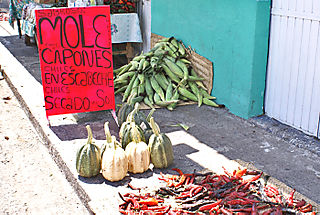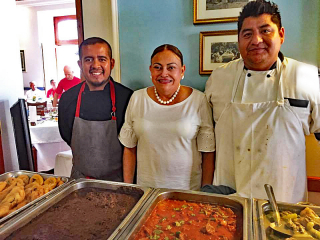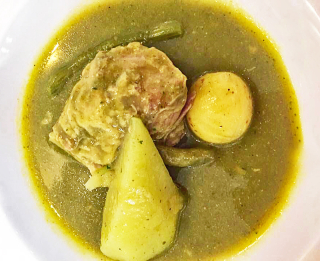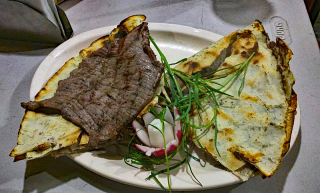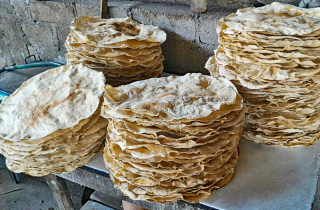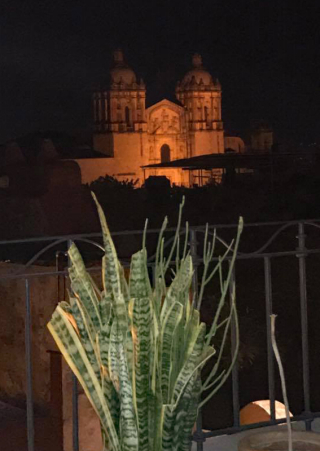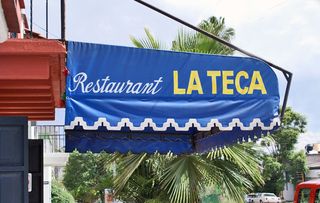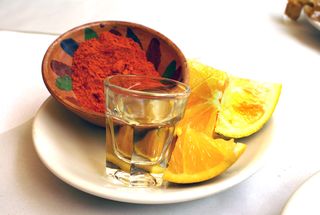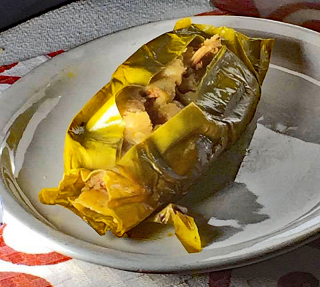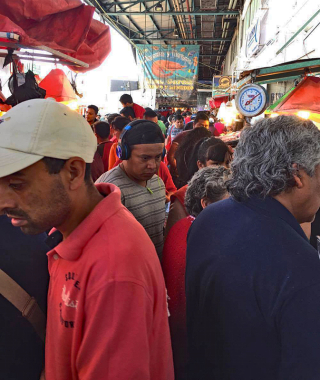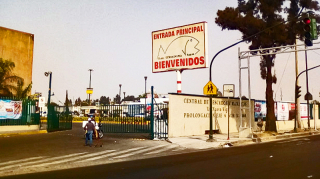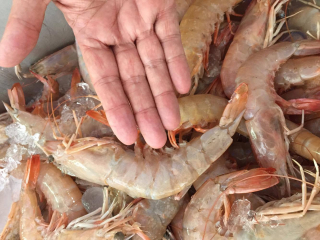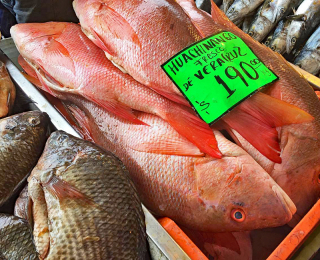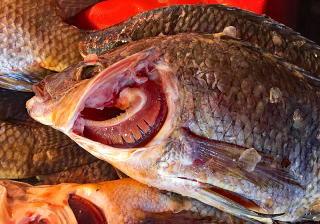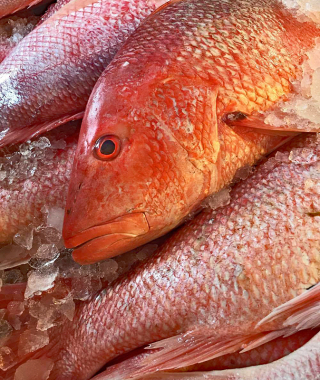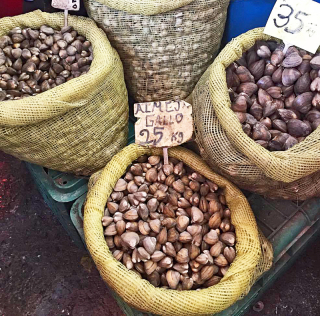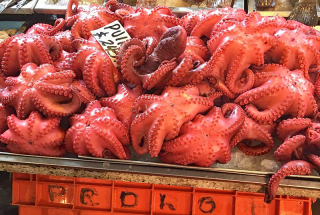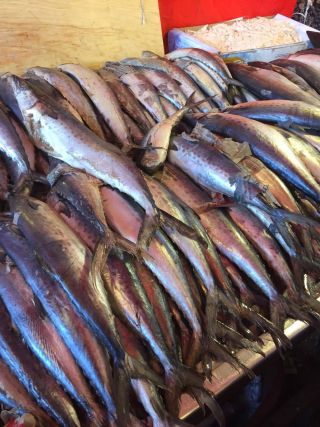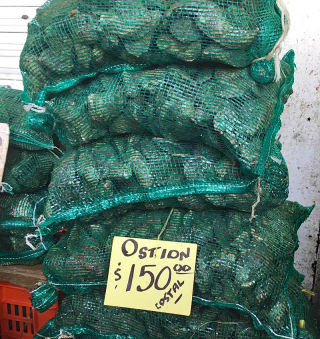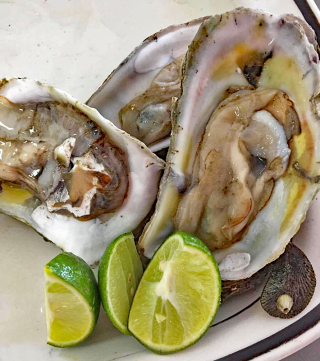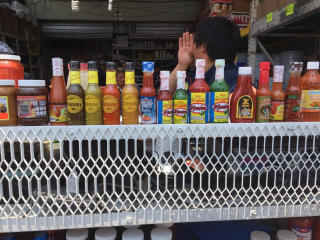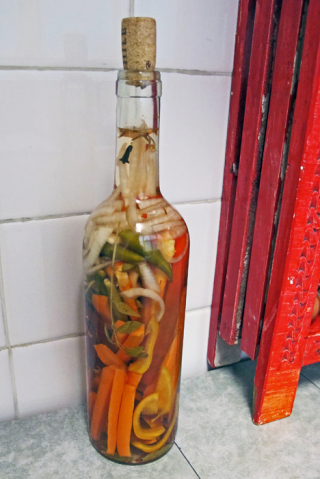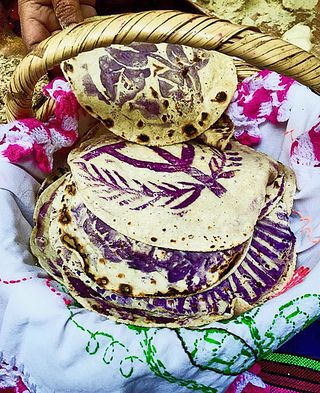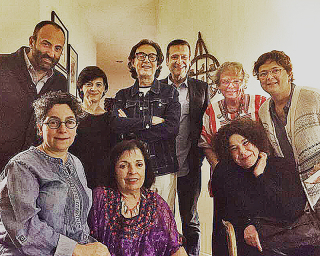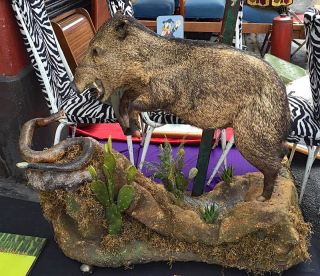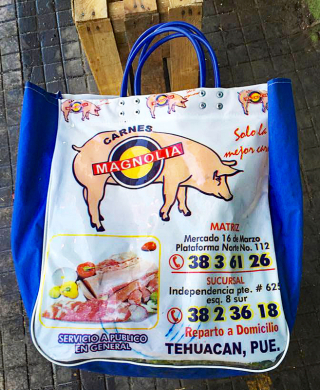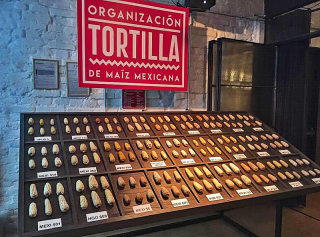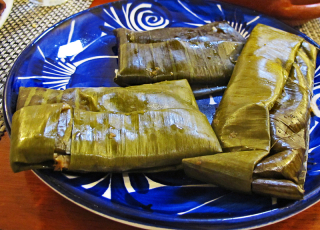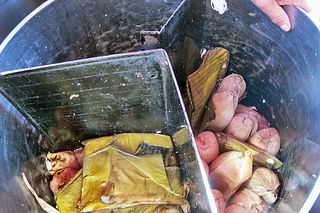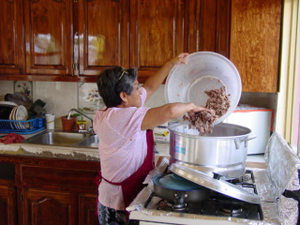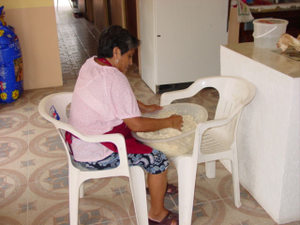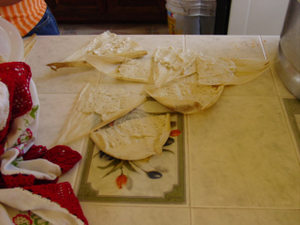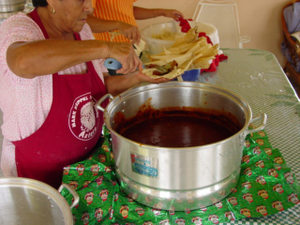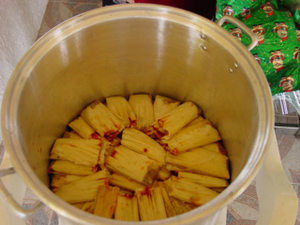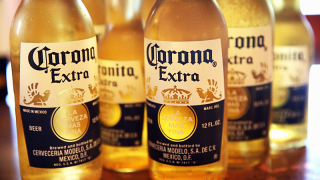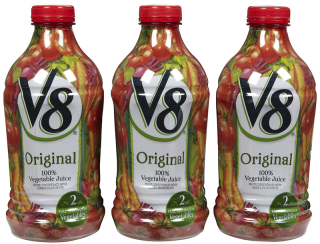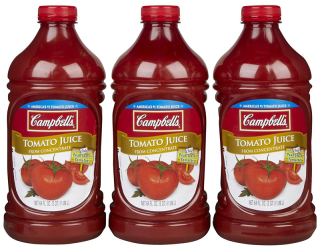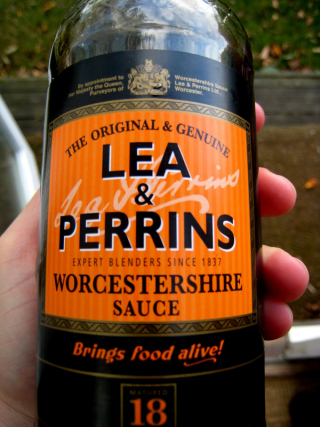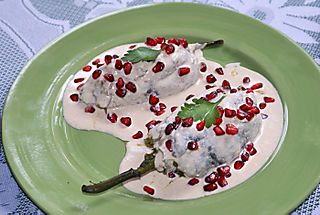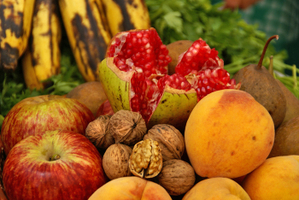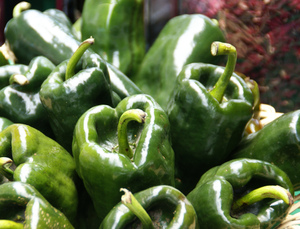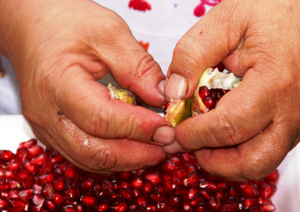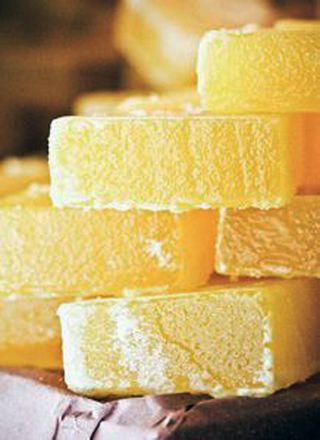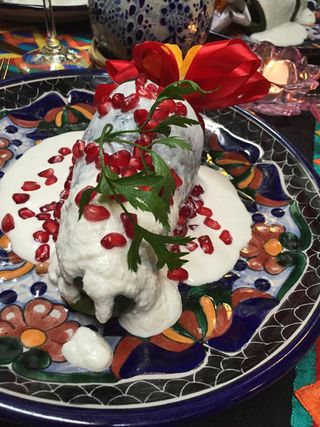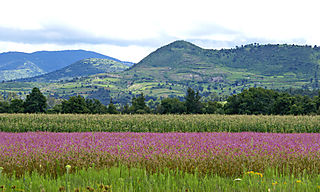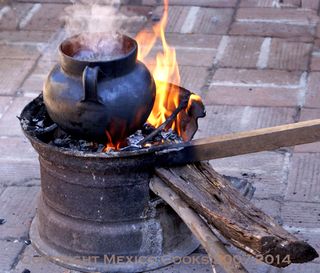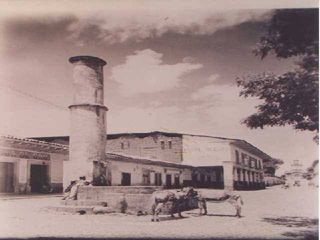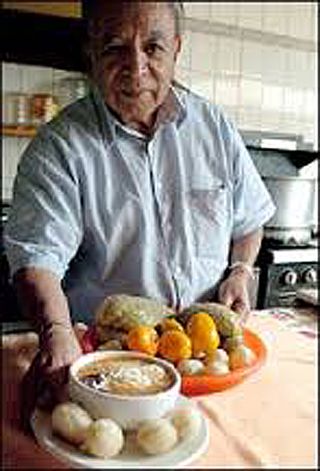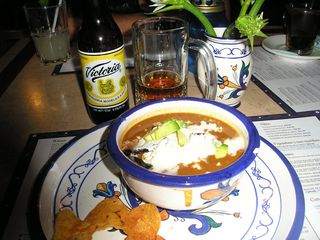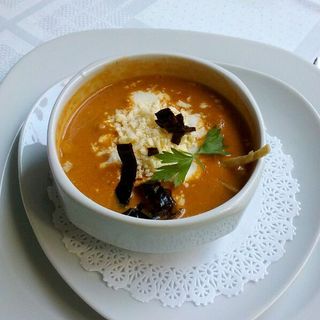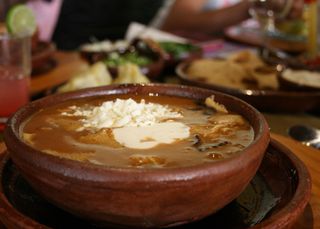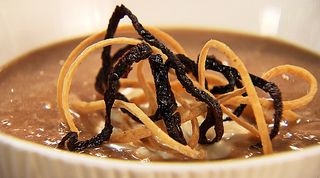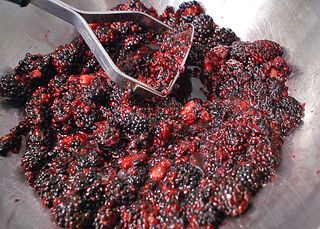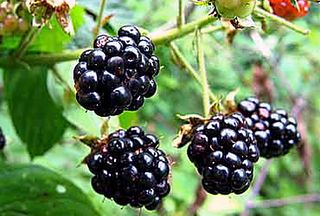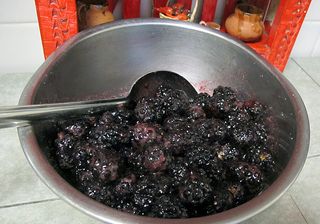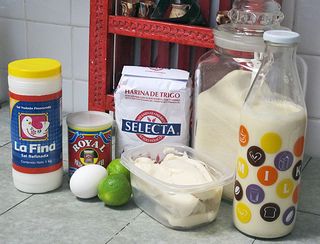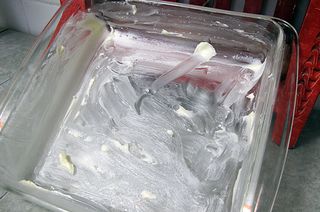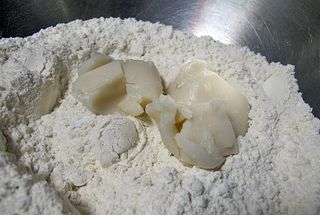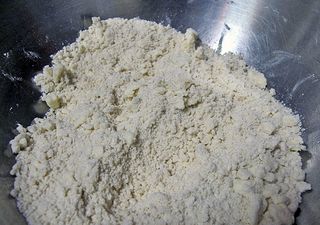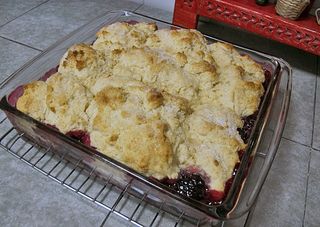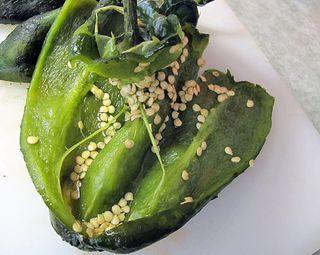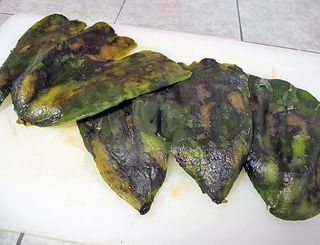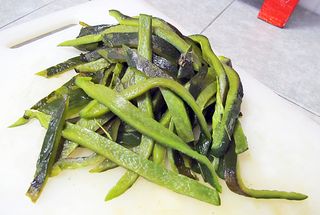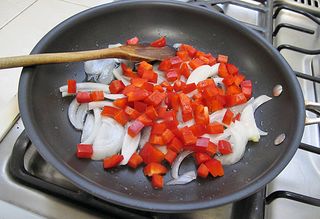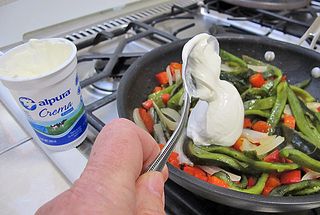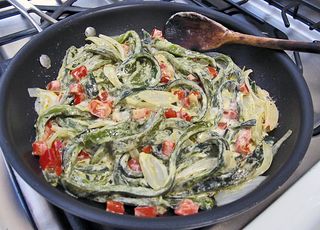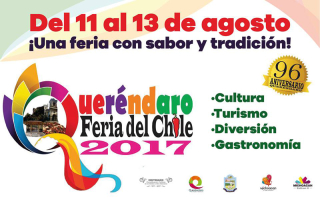
It's that time again! The Quérendaro, Michoacán, Feria del Chile (Chile Fair) is happening this very weekend. If you're in the vicinity, try to get there today or tomorrow. As the poster says, you'll find culture, tourism, fun, and FOOD.

In Queréndaro, Michoacán, daily work is all about locally grown chiles chilaca. We fell in love with these wee ballet folklórico performers, children no more than four years old.

For the last 96 years, just around the late July-early August harvest time, the town of Queréndaro, Michoacán, has celebrated the Feria del Chile (chile fair). The center of town fills with rides for children, booths specializing in all sorts of food, games of chance, a big stage for daily ballet folklórico and nightly music, and all the usual whoopdedoo of fiesta time. The star of the fiestas is, of course, the chile chilaca.

About 3 thousand acres of chile chilaca–green when immature–are planted in the central Mexican states of Aguascalientes, Jalisco, Guanajuato, Zacatecas and Michoacán. Many of the residents of Queréndaro, Michoacán commercially cultivate this particular chile. 
These chiles chilaca matured to their ripe, deep-red color prior to harvest.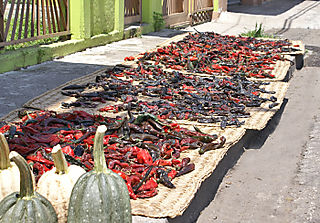
Most of the locally grown deep-red chiles chilaca are dried in the sun. The chiles you see in the photo above are spread out along a main street in Queréndaro. The chiles are drying on petates, mats made of palm or lake reeds.
When ripe and then dried in the Queréndaro sun, the chilaca becomes very dark red and is called chile pasilla. If the seeds are removed from the dried chile, its name is chile capón. Chiles capón literally means 'castrated' chiles. This vegetable castration refers to the removal of the seeds prior to cooking.
The chile chilaca also has other names such as negro (black), prieto (dark), or, particularly here in Michoacán, chile para deshebrar (chile to tear in small strips). High quality chilaca is long, slender and undulated. Each chile can measure a foot long. Before its fully-ripe state the chilaca is inky blue-green, with color and flavor similar to the chile poblano. Here in Michoacán, where there are at least two names for every growing thing, the fresh chile chilaca is coloquially known as the cuernillo (little horn).
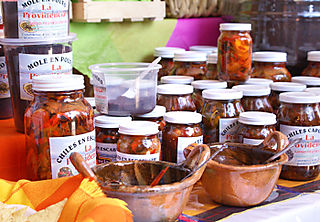
Some chilacas are sold bottled, either en escabeche (pickled in vinegar) or as chiles capones (dried, seeded, soaked, toasted, and then cooked with onion), to be used as a botana or condimento (appetizer or condiment).
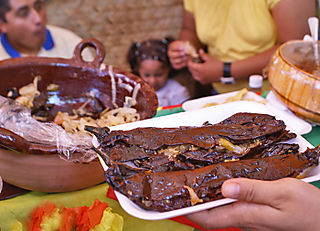
These are chiles capones rellenos—chiles capones stuffed with tomates verdes (tomatillos), onion, and garlic. The chiles in the photo, prepared for carry-out at the Alberto Gómez family booth , still needed to be topped with shredded Oaxaca cheese.
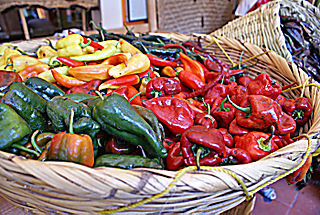
The Barajas family of Queréndaro offered this variety of freshly harvested chiles at their booth at the Feria del Chile. Clockwise beginning with the dark green chiles at the bottom of the basket, they are: chile poblano, chile güero, chile chilaca, chile de árbol, and red (fully mature) chile poblano.
Mexico Cooks! bought a kilo of fresh mature (red) chiles chilaca. We've been preparing them in various dishes. The flavor they add is deeply sweet and deadly hot. So far, our favorite recipe is with potatoes, onions, and flor de calabaza (squash blossoms). Here's what to do:
Papas con Flor de Calabaza y Chile
Ingredients
3 large white potatoes, russets if you can get them
1 medium white onion
2 fresh mature chiles chilaca
1 large clove garlic
2 bunches fresh flor de calabaza (squash blossoms)
Flour
Vegetable oil or freshly rendered lard
Water
Sea salt
Utensils
Large pot
Colander
Griddle
Small plastic bag
Large plastic bag
Large sauté pan
Spatula
Procedure
Peel and cube (approximately 3/4") the potatoes. Bring salted water to boil in a pot large enough for them. Boil the potatoes until tender (approximately 15 minutes) and strain. Allow the potatoes to dry for 30 minutes or more.
Wash and rough-chop the squash blossoms. Discard their stems.
Dice the onion to approximately 1/2". Mince the garlic.
Heat the dry griddle and roast the chiles until they are blackened. Put them in the small plastic bag, twist it closed, and allow the chiles to "sweat" for about 10 minutes. Peel and seed. Slice the chiles in 1/2" rounds.
Heat the oil or lard in the sauté pan. While it heats, put approximately 1/2 cup flour and a teaspoon of sea salt into the large plastic bag. Add the potatoes to the bag and shake until the potatoes are dredged with flour and salt.
Sauté the onions, garlic, and chiles. Add the potatoes and continue to sauté until the potatoes are golden brown. Add the squash blossoms and sauté briefly–the blossoms will wilt. Add sea salt to taste.
Serves 3 or 4 as a side dish.
¡Provecho!
Looking for a tailored-to-your-interests specialized tour in Mexico? Click here: Tours
